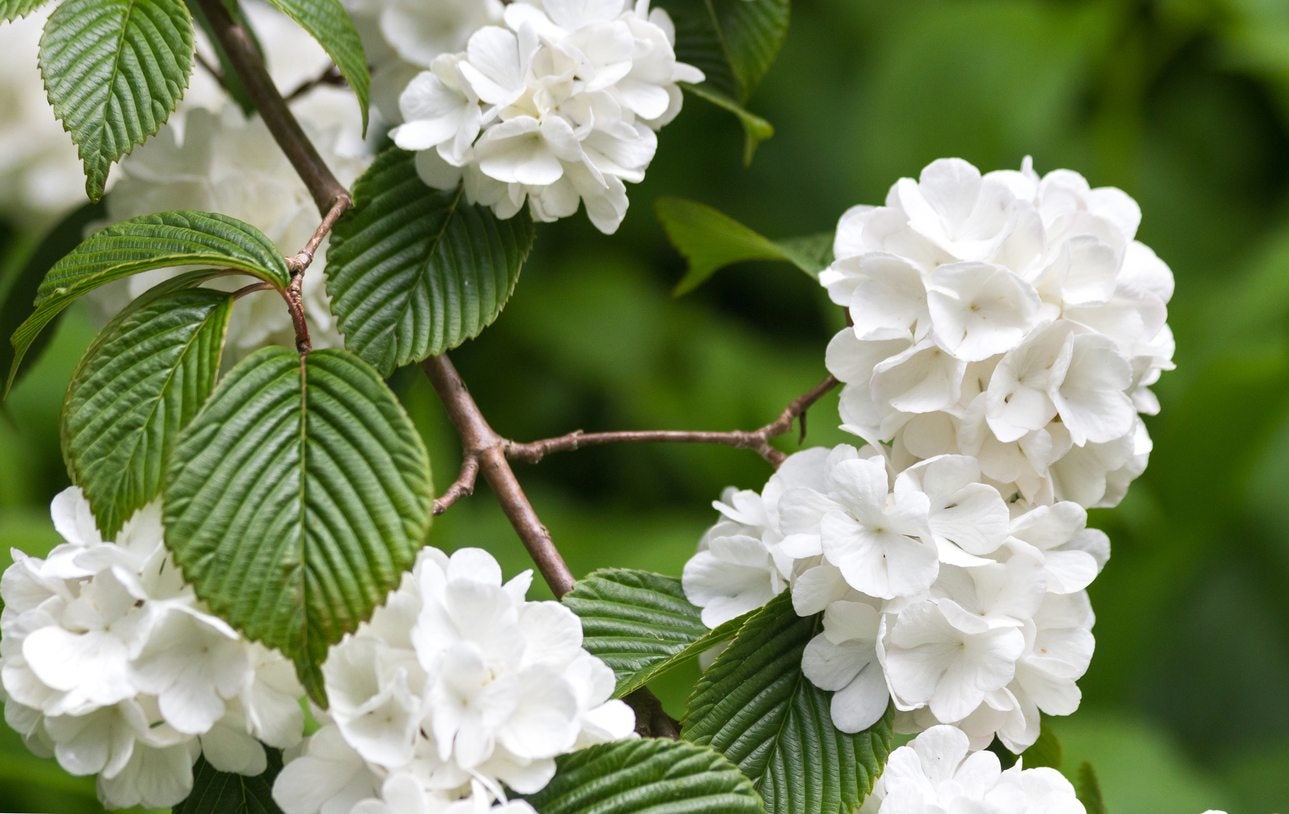Japanese Snowball Care: Learn About Japanese Snowball Trees
Large Japanese snowball shrubs look like they could require a lot of maintenance, but caring for them is easy. With pure white flower clusters in spring, they're a favorite of pollinators.


Amy Draiss
Japanese snowball trees (Viburnum plicatum) are likely to win a gardener’s heart with their lacy white globes of flower clusters hanging heavy on the branches in spring. These large shrubs look like they could require a lot of maintenance, but Japanese snowball care is really quite easy. Read on for more Japanese snowball information, including how to plant a Japanese snowball tree.
About Japanese Snowball Trees
Topping out at 15 feet (5 m.), Japanese snowball trees might better be termed shrubs. Japanese snowball shrubs grow in a range of 8 to 15 feet (2-5 m.) for mature height, and a little larger for mature spread.
Snowballs are upright, multi-stemmed shrubs. Japanese snowball trees flower heavily in spring. The pure white clusters appear in April and May, some reaching 4 inches (10 cm.) wide. The clusters include both showy, five petaled infertile flowers and small fertile flowers.
Butterflies enjoy visiting snowball trees' flowers. The fruits of the Japanese snowball ripen as summer wanes. The small oval fruits mature in late summer, turning from red to black.
Japanese snowball fruits are a source of food for wild birds. The rounded, green leaves of Japanese snowball trees are attractive and create dense foliage in summer. They turn yellow, red, or purple in fall, then drop, revealing the shrub’s interesting branching structure in winter.
How to Plant a Japanese Snowball Tree
If you want to learn how to plant a Japanese snowball tree, you’ll be happy to hear that it isn’t difficult. These shrubs thrive in U.S. Department of Agriculture plant hardiness zones 5 through 8, where they are extremely easy to grow.
Plant the seedlings in part shade or full sun in well-draining soil. They tolerate many different kinds of soil as long as the drainage is good, but they do best in moist, slightly acidic loam.
Sign up for the Gardening Know How newsletter today and receive a free copy of our e-book "How to Grow Delicious Tomatoes".
These plants are drought-tolerant once established. However, early Japanese snowball care includes generous irrigation for the first growing season.
Gardeners are happy to hear that Japanese snowball trees have no serious insect pests and are not subject to any serious diseases.

Teo Spengler is a master gardener and a docent at the San Francisco Botanical Garden, where she hosts public tours. She has studied horticulture and written about nature, trees, plants, and gardening for more than two decades, following a career as an attorney and legal writer. Her extended family includes some 30 houseplants and hundreds of outdoor plants, including 250 trees, which are her main passion. Spengler currently splits her life between San Francisco and the French Basque Country, though she was raised in Alaska, giving her experience of gardening in a range of climates.
- Amy DraissDigital Community Manager